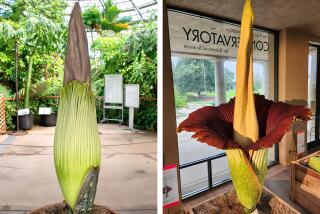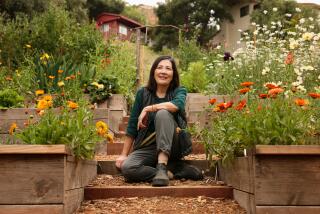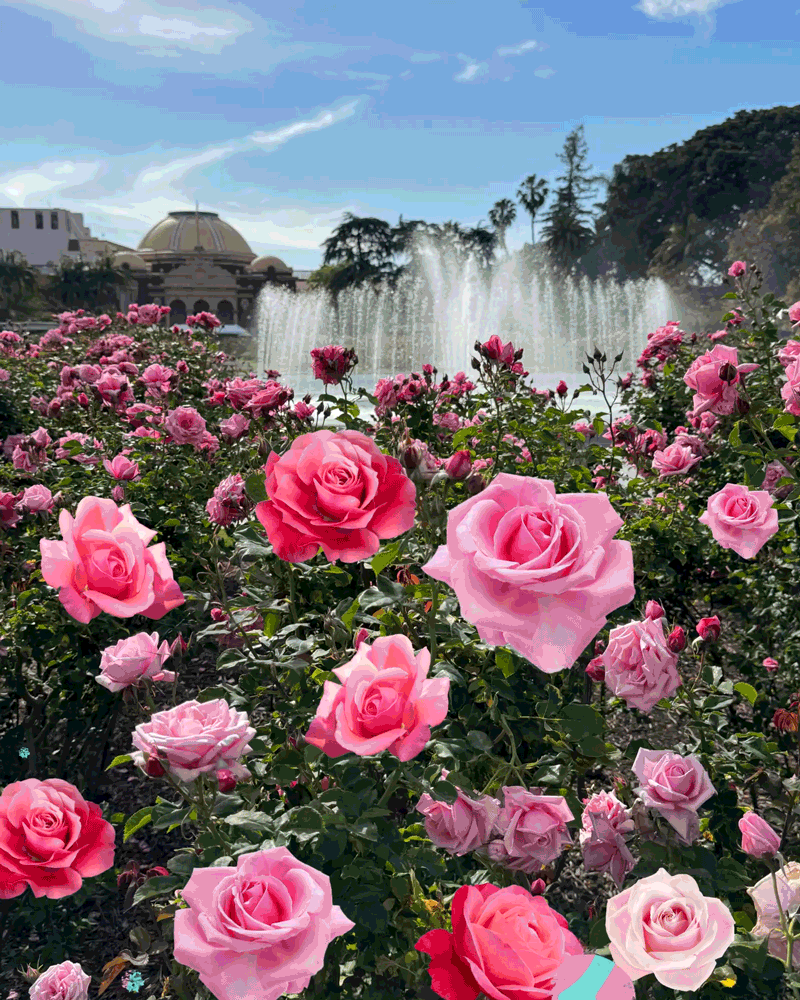Some Bouquets for the Flower Industry
Do you smell flowers in the air?
You should. Flower consumption in Southern California and the nation peaks from February through June, starting around Valentine’s Day.
“Consumers are using flowers everyday instead of occasionally these days because they are available not only at traditional florists, but on the street and in the supermarket,” said Michael Bradley, executive vice president of the Southern California Floral Assn. Even many of the wholesale flower markets, risking boycotts by professional florists, have joined the ranks of retail outlets in the last two years.
And this, the experts say, may offer as much confusion as help to the consumer.
Do you do it yourself? Use the supermarket or wholesale outlets? Do you hire the full or partial services of a professional florist?
Well, it depends. “The bottom line is personal preference, the budget, the time you have, as well as knowledge, skill and inclination,” said Deverett Allison of Seasons Flowers at the Design Center in Beverly Hills.
Money-Saving Idea
Reputable florists may charge 30% more than you would pay when you buy and do your own flowers. However, in terms of freshness, variety, longevity of flowers and waste-prevention, you could save yourself time, money and energy in the long run by leaving the flowers to the professional.
Buying wholesale is not a bad idea if you know what you’re doing, but remember you’re forced to buy by the bunch, which means you may be getting more flowers than you need and spending more money than necessary, according to Allison.
Home service of flowers may pay off for those who want a professional, personalized look and have a budget for the service.
If you can’t afford the home service, a partial service (consultation, with flowers purchased at the florist) could be a good compromise.
Many florists offer free consultations, while some charge fees which vary widely within the industry. A $25 per hour fee is considered average. Sometime the fee is subtracted from the order. “High consultation fees not deducted may indicate a lack of desire rather than a desire to serve you,” said Collins Hansen, owner of Environmental Floral Designs Ltd. in Los Angeles.
Extending Flower Lifetime
“You can extend the lifetime of cut flowers by 50% by giving them daily care,” according to wholesaler John Yoshimine of San Lorenzo Nursery Co. in the Downtown flower market. His suggestions:
Cut off the tips of the stems under water to prevent air pockets from forming within the stem, and place the flowers in a vase filled with warm water (70 degrees to 100 degrees Farenheit). Then add floral preservative, which you can purchase from any florist or a teaspoon of bleach to cut down bacteria growth.
Changing the water every day or at least every other day reduces development of bacteria responsible for premature aging of the flower. Also, flowers keep fresh longer if placed away from direct sunlight and heat.
The influx in recent years of exotic flowers flown into the American marketplace from around the world has helped change look of flowers in the home.
The trend is away from arranged flowers to loose bouquets, called hand bouquets, probably due to the increased availability of loose flowers today, according to Yoshimine.
“The euphemism ‘less is more,’ meaning using fewer flowers with loose design, probably says it all for the dramatic design change in the last few years,” Yoshimine said.
If you get into trouble with floral design, here are a few ideas and tips from professional designers Allison of Seasons Flowers, Dan Carter of Kensington Garden in Los Angeles and Bob French of California Floral Co. in Los Angeles.
The longest lasting flowers are exotic, tropical plants. They’ll last up to two weeks with frequent changes of water and require little if any design know-how.
For a high-style exotic look use Hawaiian-grown anthurium, heliconia stalks, torch ginger and protea by themselves with some bamboo sticks or curly will branches.
For a French floral look use a mixture of lilacs, iris and lilies.
A favorite look is to use loose tulips with bear grass (long, thin strands of grass).
If tulips go limp don’t throw them away. They’ll rejuvenate if you cut stems at the tip and place in fresh water, according to Allison.
For a country motif, use a terra-cotta planting pot lined with papier-mache liner. Drop daisies into the water-filled pot.
Cover any jar or food can with sheet moss glued on with Elmer’s glue and place a country arrangement of mixed flowers such as tulips, lilies, alstromeria and statice in the mossy container.
If you like presenting flowers with food, try attaching dendrobium orchids around the handle of a bread basket, allowing them to run over and up the handle.
Decorate a buffet with a basket or platter of fruit with clumps of Queen Anne’s lace.
For a centerpiece, tuck heads of roses or carnations into the open leaves of head cabbage. “This makes a wonderful decorative effect on a buffet table,” Allison said.






